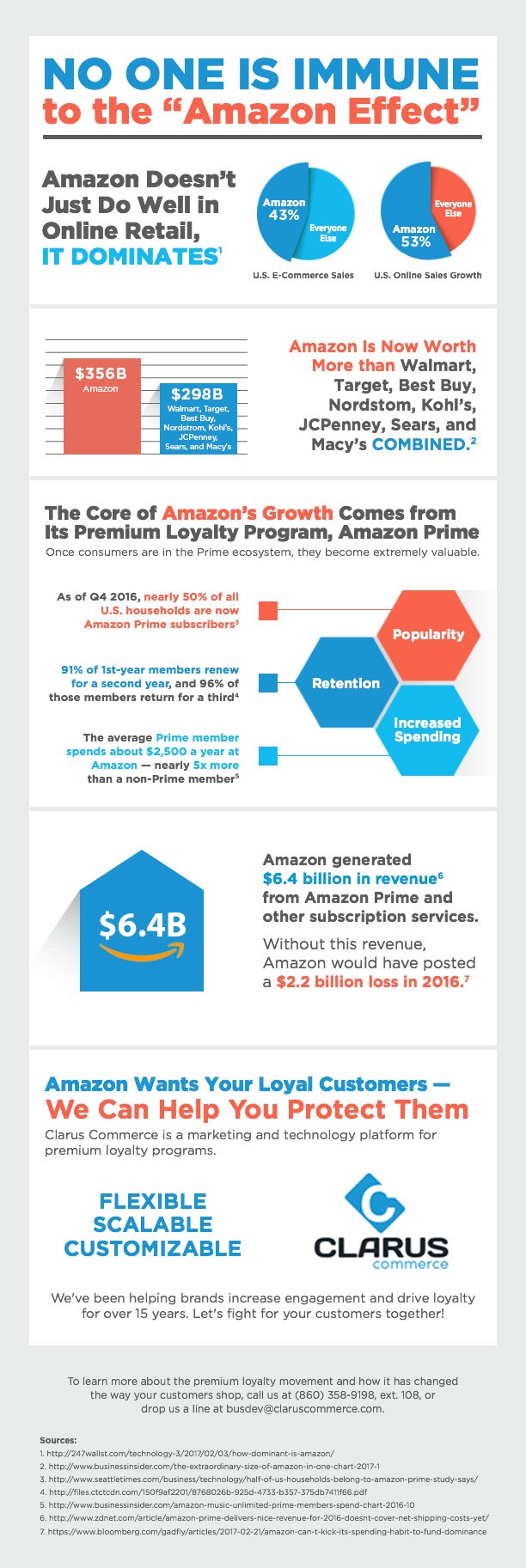It’s no secret that Amazon has one of the most impactful loyalty programs of all time. But, what has remained elusive is the data behind it. Everyone is talking about the “Amazon Effect” and how it’s shaping the retail landscape, but does anyone know just how big it is and how valuable Prime customers are to Amazon?
The numbers are shocking.
Amazon Doesn’t Just Do Well in Retail. It Dominates.
But just how dominant is Amazon? To give you an idea, total U.S. online sales rose 24% in 2016. Amazon accounted for 53% of that growth and 43% of total U.S. online sales.
No other retailer has even come close to that, thus, Amazon remains unchallenged.
To put this into perspective, take some of the largest retailers and group them together. The total combined worth of Walmart, Target, Best Buy, Nordstrom, Kohl’s, JCPenney, Sears, and Macy’s was $298 billion at the end of 2016. Amazon was worth $356 billion.
What’s even more sobering is the fact that the value of all of these companies has plummeted over the last 10 years. Guess whose value has increased by over 1900% during that period?
That’s right. Amazon.
The Core of Amazon’s Growth Comes from its Premium Loyalty Program, Amazon Prime
Once consumers are in the Prime ecosystem, they become extremely valuable. That’s why Prime has been such a key part of Amazon’s push to acquire more loyal customers.
Amazon Investor Relations Chief Darin Manney said, “Our unit growth has been strong, it’s primarily attributable to our Prime program and the customers and members that enjoy that program.”
As of Q4 2016, nearly 50% of all U.S. households are now Amazon Prime subscribers. 91% of first year members renew for a second year, and 96% of those members return for a third.
The average Prime member spends about $2500 a year at Amazon – nearly five times more than a non-Prime member. Amazon generated $6.4 billion in revenue from Amazon Prime and other subscription services in 2016.
Without this revenue, Amazon would have posted a $2.2 billion loss in 2016.
From free two-day shipping to video and music, Prime provides so much value that once customers are members they tend to stay loyal, which means they keep shopping at Amazon instead of other retailers.
To learn more about the Prime Effect and how premium loyalty programs are evolving with the way your customers shop, drop us a line here.
